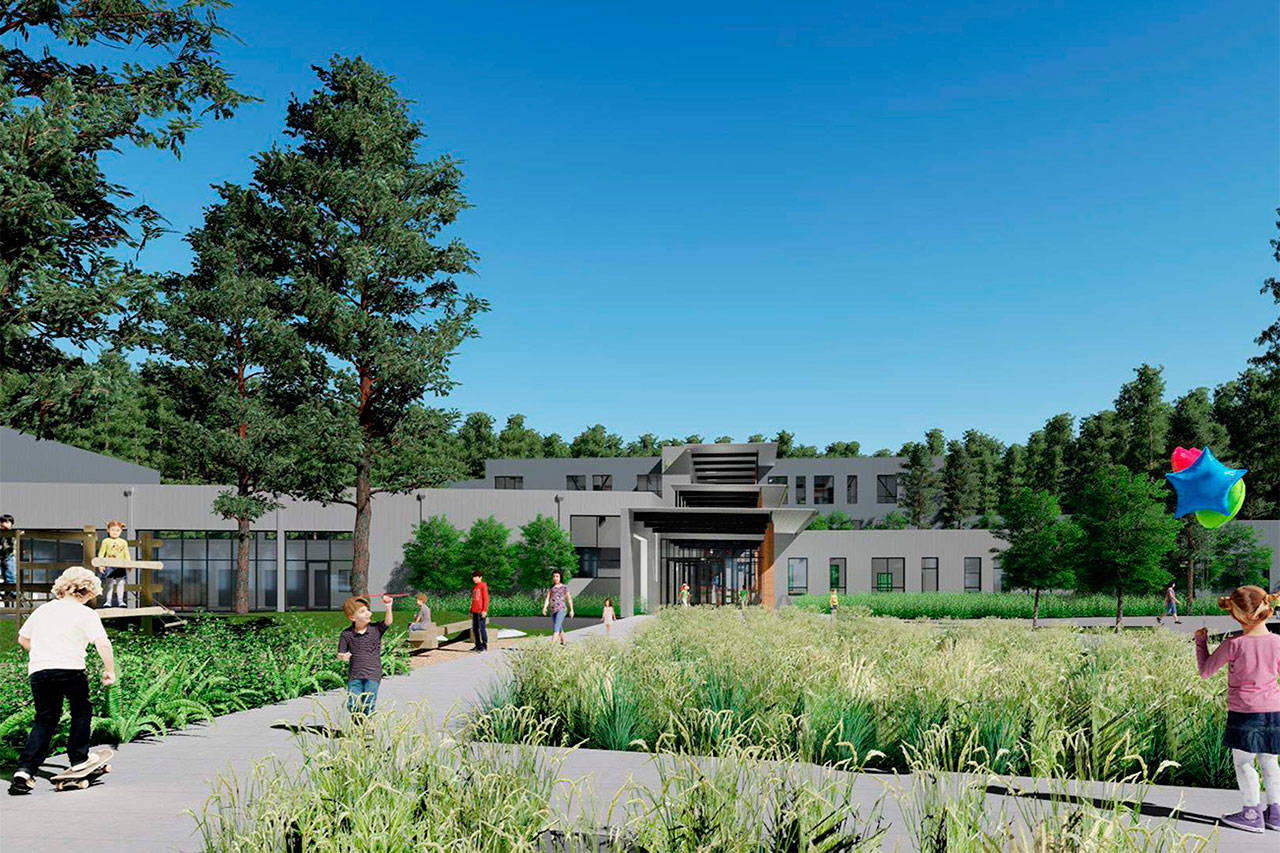Plans to construct a new Captain Johnston Blakely Elementary are looking more promising than previously thought, thanks to significant cost-cutting measures by the building’s designers.
The replacement for Blakely was originally set to be paid for with $39 million from the 2016 capital bond approved by Bainbridge voters. The $81.2 million bond also secured $30 million to replace the BHS 100 building and another $12.2 million for repairs and renovations district-wide.
But rising construction costs in the region have left project officials scrambling for months.
An April cost estimate for the Blakely project came in at $44.6 million. In May, that estimate jumped to $46.5 million and then in June, expected costs jumped again to $49.4 million.
The rapidly rising costs were chiefly due to the high demand for construction workers in the Puget Sound region, officials said, and with a large number of projects underway in the area, the number of skilled laborers and materials available to work on new projects has dwindled, thereby driving prices for new projects skyward.
After significant cost cutting strategies, project officials were able to shave off $3.9 million from their June estimate, and the new school is now expected to cost $45.5 million.
In order to wrangle costs into control for a new Blakely, designers came up with a number of solutions to reduce the pricetag, including:
– Compressing classroom clusters by reconfiguring the classes surrounding shared learning spaces;
– Reducing roof overhangs;
– Using metal panels for exterior siding instead of masonry;
– Reducing the number and size of exterior windows;
– Reducing access to exterior learning areas;
– Reducing the overall square footage (from 66,000 square feet to 63,250 square feet);
– Reducing the number of landscape plantings on the property;
– Reducing interior finishes like wood and acoustical flooring; and
– Reducing durable finishes for wall protection.
Despite the significant cuts to the design plan, Tamela Van Winkle, the district’s director of capital projects, remained optimistic about the final outcome.
“It’s going to be absolutely gorgeous, I can tell you that for a fact,” she said, adding that the project would also have a positive impact on its surroundings.
“We have done amazing things to support the environment. We have a wetland that is adjacent to us and I can tell you that when we touch and leave the site, it will be far superior to what is there today.”
During the presentation last week to the school board, Van Winkle made it clear that the final construction cost for the project could not be determined until a contract had been signed with a builder that would guarantee the maximum cost.
Until a contract is signed, it is still possible for the project to experience cost escalations, but Van Winkle said there is some money set aside to counteract this possibility.
“We have contingencies that are sitting inside of that $45 million number,” She said. “It looks like a lot, but it’s kind of a small contingency,”
Should the built-in $1.2 million contingency not be enough to counteract any future cost changes, Van Winkle said the project would have to make even more cuts to an already reduced design.
“We are all hoping and praying that these contingencies are going to get us to stay within this number,” she said.
The contract document phase of the project is expected to last until January 2018, with construction on the project set to begin in February 2018 and completion of the school expected between February and April 2019.
Board Member Tim Kinkead said he would have liked to see the school built with all of the original accoutrements, but understood staying on budget was more important.
“I’m disappointed that not all four classrooms have visibility,” Kinkead said. “I think that we wish we could have all of those things, but we also have a commitment to the taxpayers.”
“You guys made tough choices to get there,” he said, praising Van Winkle and her team’s work to get the project back on budget.
“I am very comfortable with where we ended,” he added.
Board Member Mike Spence echoed Kinkead’s sentiments.
“I share the disappointment of some of the people, that we weren’t able to build what we thought we were going to be able to build,” Spence said.
Spence reminded the audience that the district is in a very different position than when it replaced Wilkes Elementary in 2012.
“We were in the position of control, because the market was totally different. That’s not true now,” Spence said. “I am satisfied that you guys together have not overlooked anything.”
“I think you did a great job of saving the essence of what this building needs to be,” he added.
The next milestone for the project will be coming in December, as the project moves into the construction document phase.



